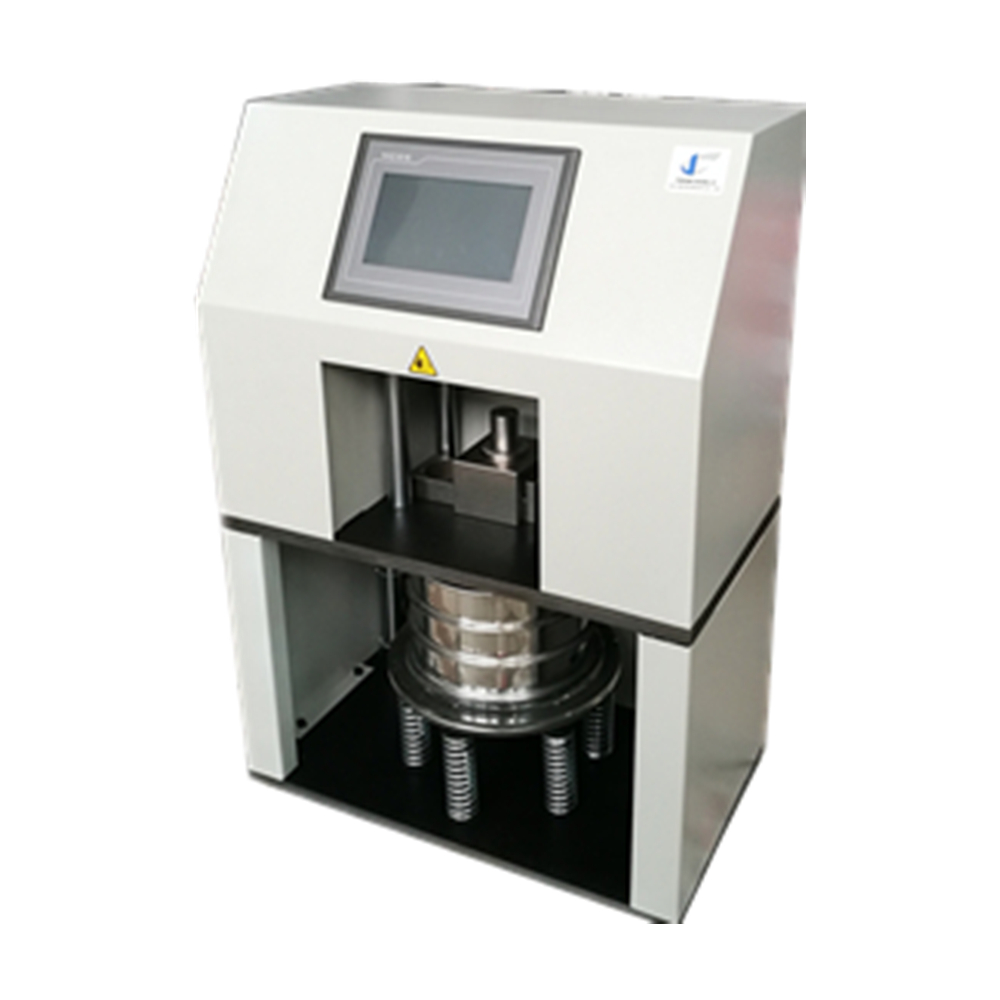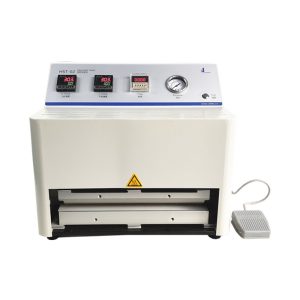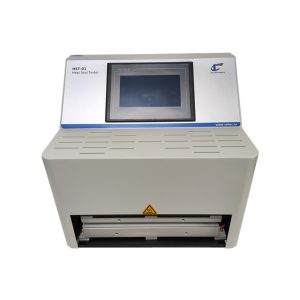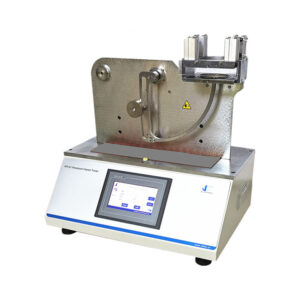บทนำเกี่ยวกับเครื่องเก็บตัวอย่างเมล็ดแก้ว GHR-01A สำหรับการต้านทานไฮโดรไลติก
การ เครื่องเก็บตัวอย่างเมล็ดแก้ว GHR-01A สำหรับความต้านทานไฮโดรไลติก เป็นเครื่องมือขั้นสูงที่ออกแบบมาเพื่อประเมินเสถียรภาพทางเคมีของวัสดุแก้วเมื่อโดนน้ำ การทดสอบควบคุมคุณภาพที่สำคัญนี้มีความสำคัญต่ออุตสาหกรรมยา เนื่องจากจะกำหนดว่าวัสดุบรรจุภัณฑ์ เช่น ขวดแก้วและหลอดแก้ว จะโต้ตอบกับยาที่บรรจุอยู่อย่างไร ซึ่งส่งผลโดยตรงต่อเสถียรภาพและความปลอดภัยของผลิตภัณฑ์เหล่านี้
ทำความเข้าใจเกี่ยวกับการทดสอบความต้านทานไฮโดรไลติก
การทดสอบความต้านทานไฮโดรไลซิสจะประเมินแนวโน้มของวัสดุแก้วที่จะเสื่อมสภาพเมื่อสัมผัสกับน้ำ การเสื่อมสภาพดังกล่าวอาจปลดปล่อยไอออนออกมาซึ่งอาจส่งผลต่อประสิทธิภาพของยาได้ การรับรองว่าบรรจุภัณฑ์แก้วแสดงความต้านทานไฮโดรไลซิสสูงถือเป็นสิ่งสำคัญในการรักษาความสมบูรณ์ของผลิตภัณฑ์ยาและป้องกันปฏิกิริยาที่ไม่พึงประสงค์
มาตรฐานการทดสอบความต้านทานไฮโดรไลติก
- ISO 719:แก้ว – ความต้านทานไฮโดรไลติกของเมล็ดแก้วที่ 98℃
มาตรฐานนี้กำหนดวิธีการทดสอบและการจำแนกประเภทสำหรับการประเมินความต้านทานไฮโดรไลซิสของเมล็ดแก้วที่อุณหภูมิ 98℃ โดยให้แนวทางเกี่ยวกับการเตรียมตัวอย่างและประเมินความต้านทานต่อน้ำ ซึ่งเป็นสิ่งสำคัญในการรับรองว่าบรรจุภัณฑ์แก้วจะคงความสมบูรณ์ภายใต้สภาวะการจัดเก็บทั่วไป - ISO720 มาตราฐาน:แก้ว – ความต้านทานไฮโดรไลติกของเมล็ดแก้วที่ 121℃
คล้ายกับ ISO 719มาตรฐานนี้มุ่งเน้นที่การทดสอบเมล็ดแก้วที่อุณหภูมิสูงถึง 121℃ โดยมีวิธีการที่เข้มงวดในการประเมินประสิทธิภาพของวัสดุแก้วภายใต้สภาวะที่รุนแรงมากขึ้น ซึ่งมีความเกี่ยวข้องโดยเฉพาะกับกระบวนการฆ่าเชื้อ
วิธีการทดสอบ
ขั้นตอนการทดสอบประกอบด้วยการวางตัวอย่างแก้วลงในครก ซึ่งจะมีสากอัตโนมัติบดแก้วให้เป็นชิ้นเล็กชิ้นน้อย จากนั้นอุปกรณ์จะสั่นตะแกรงชุดหนึ่งเพื่อแยกตัวอย่างที่ผ่านคุณสมบัติออกจากเศษแก้ว วิธีการอัตโนมัตินี้ช่วยให้มั่นใจว่าตัวอย่างจะถูกเตรียมอย่างถูกต้องและมีประสิทธิภาพ โดยยึดตามมาตรฐาน ISO 719 และ ISO 720
คุณสมบัติและข้อดีของเครื่องทดสอบ GHR-01A
- ระบบอัตโนมัติอัจฉริยะ:GHR-01A ผสมผสานการบดและการร่อนด้วยการสั่นสะเทือนเข้าเป็นหน่วยเดียว ช่วยให้การเตรียมตัวอย่างราบรื่นและรับรองขนาดตัวอย่างที่เป็นไปตามมาตรฐาน
- อินเทอร์เฟซที่เป็นมิตรกับผู้ใช้:การทำงานของหน้าจอ HMI ช่วยให้การโต้ตอบระหว่างคนกับเครื่องจักรเป็นเรื่องง่าย ทำให้ผู้ปฏิบัติงานสามารถจัดการกระบวนการทดสอบได้อย่างง่ายดาย
- คุณสมบัติด้านความปลอดภัย:การจัดการด้วยมือที่ลดลงช่วยเพิ่มความปลอดภัยให้กับบุคลากร ในขณะที่อุปกรณ์ความปลอดภัยในตัวจะป้องกันไม่ให้กระจกกระเด็นออกมา ช่วยรักษาความสมบูรณ์ของการทดสอบ
- การออกแบบที่เป็นมิตรกับสิ่งแวดล้อม:อุปกรณ์นี้มีระบบรวบรวมขยะแก้วโดยเฉพาะเพื่อลดผลกระทบต่อสิ่งแวดล้อม
- การทดสอบความแม่นยำการร่อนอัตโนมัติช่วยเพิ่มความแม่นยำ ทำให้ได้ผลลัพธ์ที่เชื่อถือได้
- ฟังก์ชั่นสวิตช์จำกัด:การเพิ่มมาตรการด้านความปลอดภัยช่วยป้องกันอันตรายจากการปฏิบัติงาน
- การออกแบบที่เหมาะสมที่สุดเค้าโครงแนวตั้งช่วยลดผลกระทบของแรงโน้มถ่วงต่อตัวอย่างขนาดใหญ่ ทำให้มั่นใจได้ว่าผลการทดสอบจะมีความสม่ำเสมอ
พารามิเตอร์หลัก
| ขนาดครก/สาก | Φ50/Φ48 มม. |
| ตะแกรง A รูรับแสง | 425ไมโครเมตร |
| ตะแกรง B รูรับแสง | 300ไมโครเมตร |
| รูตะแกรง O | 600ไมโครเมตรไมโครเมตร |
| ระยะเวลาการเขย่าตะแกรง | 5นาที |
| แรงดันแก๊ส | 0.5 เมกะปาสคาล |
| ขนาดพอร์ตแก๊ส | Ф6มม. |
| พลัง | ไฟฟ้ากระแสสลับ 110~220V 50Hz |
การใช้งานของเครื่องทดสอบ GHR-01A
GHR-01A เป็นสิ่งจำเป็นสำหรับการใช้งานที่หลากหลาย โดยเฉพาะในอุตสาหกรรมยาและอุปกรณ์ทางการแพทย์ เหมาะอย่างยิ่งสำหรับการเตรียมตัวอย่างเม็ดแก้วที่ทนต่อการไฮโดรไลติกซึ่งใช้ในผลิตภัณฑ์แก้วทางการแพทย์ต่างๆ รวมถึงขวดสำหรับฉีด ขวดสำหรับฉีด แอมเพิล และขวดน้ำยาสำหรับรับประทาน
โดยสรุปแล้ว เครื่องทดสอบความต้านทานไฮโดรไลติกเมล็ดแก้ว GHR-01A เป็นโซลูชันที่ซับซ้อนสำหรับการรับประกันคุณภาพและความปลอดภัยของบรรจุภัณฑ์แก้วยา โดยปฏิบัติตามมาตรฐาน ISO เครื่องมือนี้ให้ผลลัพธ์ที่เชื่อถือได้ซึ่งมีความสำคัญต่อการรักษาความสมบูรณ์ของผลิตภัณฑ์ยา เลือก GHR-01A สำหรับความต้องการการทดสอบของคุณเพื่อให้มั่นใจถึงมาตรฐานการควบคุมคุณภาพสูงสุด
คำถามที่พบบ่อย
- ความต้านทานไฮโดรไลติกคืออะไร? ความต้านทานไฮโดรไลติกหมายถึงความสามารถของวัสดุแก้วในการต้านทานการเสื่อมสภาพเมื่อสัมผัสกับน้ำ ซึ่งเป็นสิ่งสำคัญในการรักษาเสถียรภาพของยา
- เครื่องทดสอบ GHR-01A ทำงานอย่างไร? เครื่องทดสอบจะบดตัวอย่างแก้วโดยอัตโนมัติและสั่นตะแกรงเพื่อแยกเม็ดแก้วที่หลุดล่อนออกจากขยะ ช่วยให้กระบวนการทดสอบมีประสิทธิภาพมากขึ้น
- GHR-01A เป็นไปตามมาตรฐานอะไรบ้าง? GHR-01A เป็นไปตามมาตรฐาน ISO 719 และ ISO 720 สำหรับการทดสอบความต้านทานไฮโดรไลติกของเมล็ดแก้ว
- สามารถทดสอบผลิตภัณฑ์ประเภทใดได้บ้าง? GHR-01A เหมาะสำหรับการทดสอบแก้วที่ใช้ในขวดฉีดยา ขวดแอมเพิล และภาชนะบรรจุของเหลวสำหรับใช้รับประทาน
- กระบวนการทดสอบมีความปลอดภัยหรือไม่? ใช่ GHR-01A ได้รับการออกแบบด้วยคุณลักษณะด้านความปลอดภัยมากมายเพื่อปกป้องบุคลากรและรักษาความสมบูรณ์ในการทดสอบ





